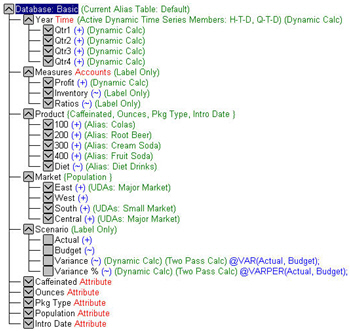Thursday, June 26, 2025
Oracle EPM Job Market
Oracle EPM Hyperion Job Market
Wednesday, June 25, 2025
Oracle EPBCS Beginners
Oracle EPBCS (Enterprise Planning and Budgeting Cloud Service)?
EPBCS has world-class budgeting and forecasting, data management, and analysis capabilities in Oracle Hyperion Planning
- Oracle EPBCS Overview
- PBCS vs EPBCS
- Hyperion Planning vs Oracle PBCS/EPBCS
- EPBCS Basic Questions
- EPBCS Interview Questions
======Related Links====
Tuesday, June 3, 2025
Loading Data using Rules file, Free form method, Excel lock& send methods.
To load data into the database, we must build all dimensions first. The data will be loaded into a
page file, and indexes will also be created. When the page file reaches 2 GB, it creates another file
, and so on. Same with the index file. The files are created in the following path.
ARBORPATH/APP/app-name/db-name/ESS00001.PAG
ARBORPATH/APP/app-name/db-name/ESS00001.IND
Loading data can be done using any of the following methods.
1. Loading data using a rules file
2. Free-form data loading
3. Through Excel Lock and send (or through analyzer
Build the Dimensions using the Rule File
Build the Dimensions using the Rule File.
RULES FILES: Rules files are used to build the dimensions and to load data into Essbase database.
* Rules files are stored with.RUL extension on the server.
* To create the rules file, right-click on the rules file and click Create Rules file.
Building Dimensions using Rules files: We can create the hierarchies in the outline manually or
using rules files. There are 3 ways to build the rules files.
1. Generation reference method
2. Level reference method
3. Parent-child reference method
Sunday, June 1, 2025
Glossary Essbase
Application is a folder structure that contains one or more databases and related files.
Database is a folder that contains objects such as outline, rules files, calculation scripts, report scripts, and multidimensional data.
Outline: An empty outline is created as soon as the database is created. Double click on the
outline and click Add children to add dimensions. Outline consists of Hierarchies.
Dimension: consists of members. A hierarchy is nothing but a structural relationship among members. It gives parent parent-child relationship among members. The outline will also give consolidation operators.
Note: The name of the outline can be changed only by renaming the database. The name of the outline
cannot be changed directly.
Parent is a member that has a branch below it.
Eexample, Margin is a parent member for Sales and Cost of Goods Sold.
Child is a member that has a parent above it.
Example: Sales and Cost of Goods Sold are children of the parent Margin.
Siblings are child members of the same immediate parent, at the same generation.
Example: Sales and Cost of Goods Sold are siblings (they both have the parent Margin), but Marketing (at the same branch level) is not a sibling because its parent is Total Expenses.
Descendants are all members in branches below a parent.
Example: Profit, Inventory, and Ratios are descendants of Measures. The children of Profit, Inventory, and Ratios are also descendants of Measures.
Ancestors are all members in branches above a member.
Example: Margin, Profit, and Measures are ancestors of Sales.
The root is the top member in a branch. Measures is the root for Profit, Inventory, Ratios, and the
children of Profit, Inventory, and Ratios.
Leaf members have no children. They are also referred to as detail members, level 0 members,
and leaf nodes.
Example: Opening Inventory, Additions, and Ending Inventory are leaf members.
Generation refers to a consolidation level within a dimension.
A root branch of the tree, i.e., Dimension, is generation 1. Generation numbers increase as you count from the root toward the leaf member.
Levels refer to a consolidation level within a dimension. The leaf member is at Level 0, and the
parent member of level 0 is at level 1, and so on
Create Application, Database
Application, Database Creation- Essbase
An application is a folder structure that contains one or more databases and related files.
To create an Application, log on to the Essbase server using the EAS console (Through the EAS server).
- Double-click on the Essbase server
- Right-click on the application
- Click Create new application.
- Enter application name.
The application name can take a maximum of 8 characters.
DATABASE: A database is a folder that contains objects such as outlines, rule files, calculation scripts, report scripts, and multidimensional data.
To create a Database,
Double-click on the applications and right-click on the database. Enter the Database name. The
The database name can take a maximum of 8 characters for non-Unicode applications.
==================









